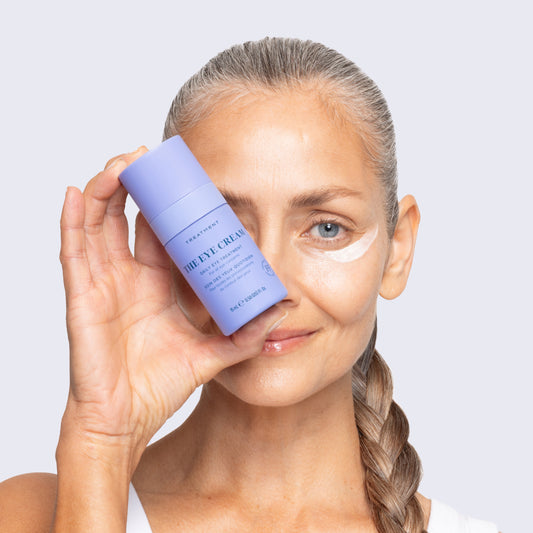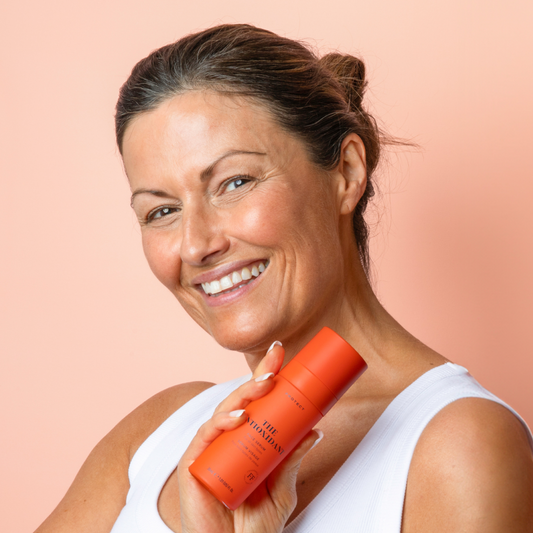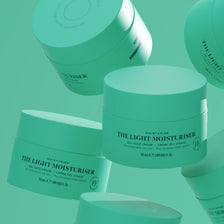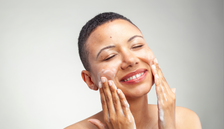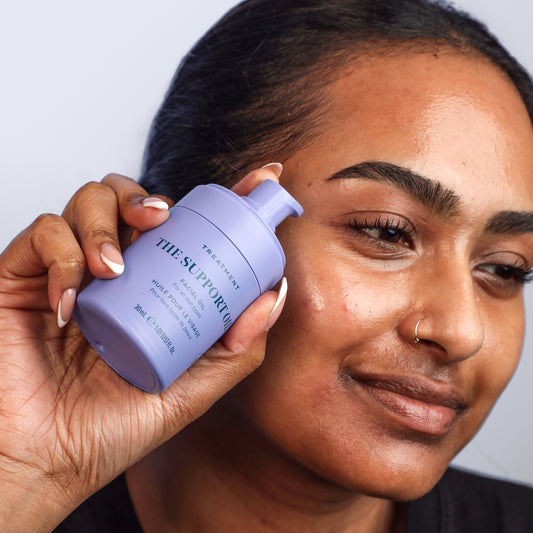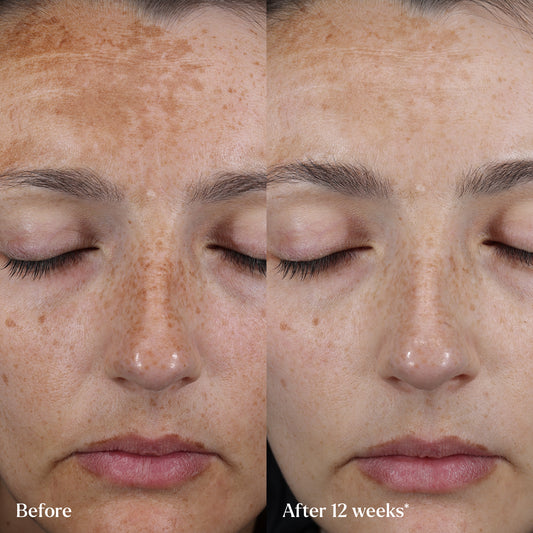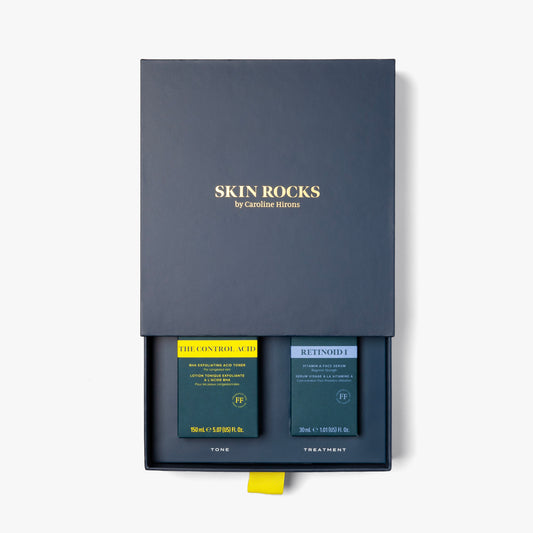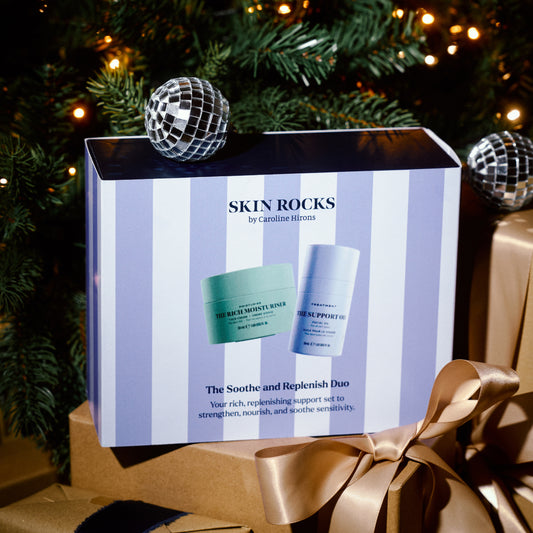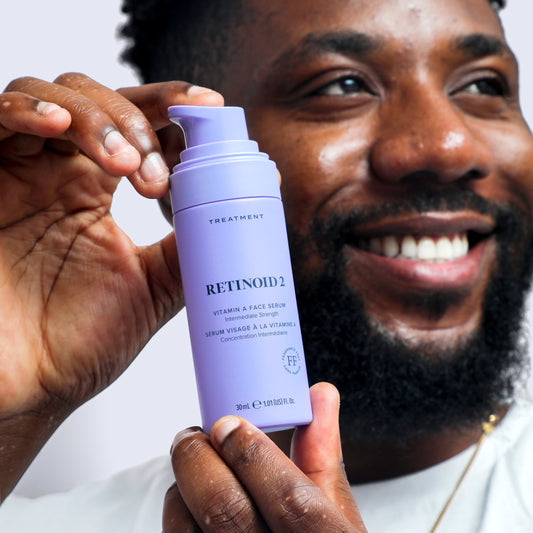The question of whether you need a separate eye cream has often been divisive. However, as a lifelong advocate of a dedicated eye cream, we asked our Founder, Caroline Hirons, for her reasons why she thinks it’s a key skincare investment. Read on to find out everything you need to know.
Do you really need a separate eye cream?
Yes. If your budget cannot stretch to one, then by all means skip it, but I have always advocated that an eye cream is a necessity, not an add-on. If you are under 30, don’t stress, but over 30, crack on.
Why do you recommend a separate eye cream?
There are several reasons I recommend using a separate eye cream. My top three are below:
- To respect the difference in eye area skin.
- To target specific, individual eye concerns.
- To optimise results around the eyes.
To respect the difference in eye area skin
The skin around the eyes is very fragile and cannot retain moisture as easily as the rest of the skin, so it's key to consider its differences and specific needs. The skin around the eyes has fewer oil glands and a more delicate structure, making it prone to dehydration, lines and irritation. Using a product designed specifically for this ultra-thin skin is therefore important to respect its vulnerability––the skin here is typically only about 0.5 mm thick compared to other parts of the face (such as the cheeks or forehead) which can be around 2 mm thick. Dedicated eye creams are formulated to be lighter in consistency and more effectively absorbed in this fragile area.
Many ingredients common to facial moisturisers (especially ones formulated for specific skin conditions/results) are also unsuitable for the eye area (i.e very high concentrations of vitamin C or heavy emollients), and an oil-rich moisturiser used in the eye area can cause styes and even block the meibomian glands–– the tiny oil glands located along the edge of your eyelids. Using a dedicated eye cream can help to mitigate these risks.
To target specific, individual eye concerns
We don’t all have the same skin or skincare concerns, so a specific eye cream can help target individual skin types and goals via different formulations, textures, and actives. Eye area skin can become crepey and dry without proper hydration from an eye cream, and if you have concerns such as puffiness, fine lines, dark circles or laxity, targeted eye creams can help. There are numerous gels, light creams, serums and retinoid eye products on the market specifically formulated for these issues, and if you have several skincare concerns at once there are some eye creams that tackle multiple—if not all—concerns in one formula.
To optimise results around the eyes
The generally lightweight formulation of eye creams ensures effective delivery of active ingredients without overwhelming the fragile skin ––allowing for better penetration and faster results. Using a heavier moisturiser, for example, will likely yield suboptimal results, as they are often formulated with larger molecules or heavier textures that may not absorb well into the thinner skin, or result in clogged pores, milia, or increased puffiness.
It’s key to note that applying a dedicated eye cream correctly is also critical to get the results you want. Applying it to the orbital bone (rather than on the soft, fleshy areas of lower and upper eyelid skin that directly cover the eyeball) is essential. Thinking ‘bone, not ball’ is the most effective way to apply correctly and avoid causing puffiness by overloading the area. It’s also imperative to apply it before any of your treatment steps or moisturiser/SPF. This will amplify its efficacy as it won’t have to fight its way past richer formulations and will create an all-important barrier.
I’ve always said that putting your eye cream on last is like wearing your knickers over your clothes. Apply first, sweeping around the bone for the best results.
Which texture of eye product is best?
Lightweight creams are great for providing hydration and addressing concerns such as dryness, creepiness, fine lines and wrinkles. As always, formula is all––so it really comes down to what you are trying to target, your personal texture preferences, and the actives within the formulation.
Gel and serum textures are ideal if you're dealing with oily lids or prefer a very refreshing, cooling texture.
Can you apply eye cream over the eyelid itself or just the orbital area?
Generally speaking, if a product is specifically formulated for the eye area you can use it on the eyelid but always avoid taking it to the lash line —as if the product migrates it can enter the eye – potentially causing stinging, eye watering and irritation. Be sparse on the lid itself if you have makeup that you want to stay put.






